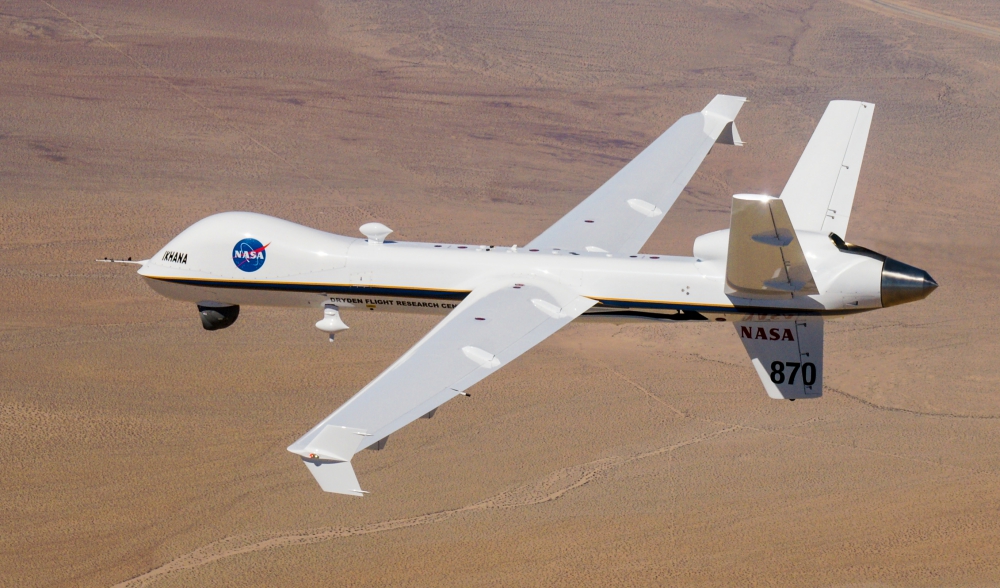
A Detect and Avoid (DAA) avionics system developed by General Atomics Aeronautical Systems, Inc. (GA‑ASI) was the key technology that enabled an unmanned aircraft flight through the National Airspace System (NAS) after taking off from southern California on Tuesday.
The DAA system installed on Ikhana, a NASA-owned Predator B/MQ-9 Unmanned Aircraft System (UAS), enabled the UAS to meet the FAA’s 14 CFR 91.113(b) requirement to “see and avoid” other aircraft during today’s flight.
“Our goal of producing UAS that can be certified to fly in non-segregated airspace took a big step forward today,” said Linden Blue, CEO, GA-ASI. “Today’s successful flight is testament to the strong relationship that we have with the FAA, NASA’s Armstrong Flight Research Center and Honeywell to produce the definitive standard for unmanned aircraft operation in congested airspaces.”
The DAA system combines automatic collision avoidance with the ability for the pilot to remain ‘well clear’ of other airspace users. Its subsystems include a GA-ASI-developed airborne radar, a TCAS II and DAA tracking capability from Honeywell, Automatic Dependent Surveillance-Broadcast (ADS-B) IN/OUT, and a Conflict Prediction and Display System.
“Our DAA system is more capable than the collision avoidance systems required on today’s commercial manned aircraft and we believe it far exceeds the average pilot’s ability to ‘see and avoid’,” said David R. Alexander, president, Aircraft Systems, GA-ASI. “The predictive capabilities our system employs create a safe environment for manned and unmanned aircraft to fly together in the NAS.”
“This is a huge milestone for our Unmanned Aircraft Systems Integration in the National Airspace System project team,” said Ed Waggoner, NASA’s Integrated Aviation Systems Program director. “We worked closely with our Federal Aviation Administration colleagues for several months to ensure we met all their requirements to make this initial flight happen.”
Source: www.uasvision.com
